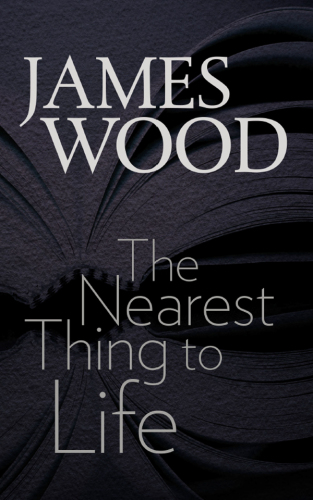
The Nearest Thing to Life
The Mandel Lectures in the Humanities
کتاب های مرتبط
- اطلاعات
- نقد و بررسی
- دیدگاه کاربران
نقد و بررسی

March 23, 2015
Relating literature to life and vice versa, the four essays collected in this volume from Wood (The Fun Stuff)—the first three originally written for Brandeis University’s Mandel Lectures series—provide virtuoso displays of eloquence and insight. In “Why?” death is presented as a bookend to life that encourages us to find structure in the moments lived between the beginning and end of being, just as a well-wrought work of fiction creates a sense of meaning in the events between its beginning and end. “Serious Noticing” uses Chekhov’s short story “The Kiss” as a touchstone for studying the times in a life that “represent those moments in a story where form is outlived, canceled, evaded.” “Using Everything” is a delightful remembrance of the author’s youthful discovery of criticism that is more “passionate redescription” than academic analysis, and that deploys literature’s own “language of metaphor and simile.” Wood often draws on his personal life, as in “Secular Homelessness,” wherein he likens watching his children grow up American in a country where he is not a naturalized citizen to reading about fictional characters. His prose is rich in verbal artistry and laced with references to an abundance of writers. These essays are clearly the work of someone who has read widely and with infectious enthusiasm. 73 illus.

The New Yorker critic celebrates the richness of literature in his own life.At once touching, elegant, and wise, the essays collected in this slim volume were originally delivered as lectures, the first three at Brandeis University and the fourth at the British Museum. Wood (Literary Criticism/Harvard Univ.; The Fun Stuff: And Other Essays, 2012, etc.) admires criticism that is "not especially analytical" but rather "a kind of passionate redescription." His own reflections on a wide range of writers--including Woolf, Chekhov, Teju Cole, Henry Green, and Aleksandar Hemon--are infused with the passion of a voracious, highly discerning reader. Since childhood, he writes, books have "irradiated" his mind "by the energy of their compressed contents." Growing up in the northern English town of Durham in a family of "engaged Christians," Wood found in literature answers to the philosophical question "why?" that were not simply theological. When he was 15, he discovered Martin Seymour-Smith's Novels and Novelists: A Guide to the World of Fiction. He was enthralled by the book's gazetteer of writers and by the author's terse evaluations of a novel's greatness. Seymour-Smith was a literary "Siskel and Ebert." For Wood, "great writing asks us to look more closely, it asks us to participate in the transformation of the subject through metaphors and imagery." Metaphors generate a "form of identification" that creates a reader's empathy for fictional characters. Great writers, Wood adds, "rescue the life of things" from annihilation caused by fading memories and inattention. In "Secular Homelessness," Wood considers the "strange distance, the light veil of alienation thrown over everything" that he feels in America, where he has lived for the past 18 years. He offers the word "homelooseness" as more accurate than homelessness or exile to describe that sense: a feeling that "the ties that bind one to Home have been loosened." Deeply thoughtful essays on literature's gifts and consolations. COPYRIGHT(1) Kirkus Reviews, ALL RIGHTS RESERVED.

May 1, 2015
"Telling a story about the story you are reading" is how Wood (English, Harvard Univ.; staff writer, The New Yorker; The Fun Stuff) defines literary criticism. In these four lectures, some previously published, Wood takes readers on his journey from lying to homelessness to show how fiction accommodates his life changes. Wood grew up as a "formidable liar," which led him to literature, specifically fiction, in which anything could be imagined. As a youth he realized that no fictional character dies unintentionally, and he saw that the path of history could be changed in novels. The collection is both memoir and criticism. Wood cites the works of Eudora Welty, Henry James, Italo Calvino, Leo Tolstoy, Marilynne Robinson, and others to illustrate his points. He uses his personal quandary of having no desire to become a U.S. citizen even though he has lived in America for nearly 20 years to explain the difference between Home and home. Readers feel his dilemma: he yearns for his British heritage while enjoying America, from general stores in New Hampshire to Boar's Head logos on delivery trucks and the phrase "take it easy." VERDICT Beneath the academic tone of this collection lies an insightful evaluation of literature from popular fiction to the classics.--Joyce Sparrow, Kenneth City, FL
Copyright 2015 Library Journal, LLC Used with permission.

























دیدگاه کاربران